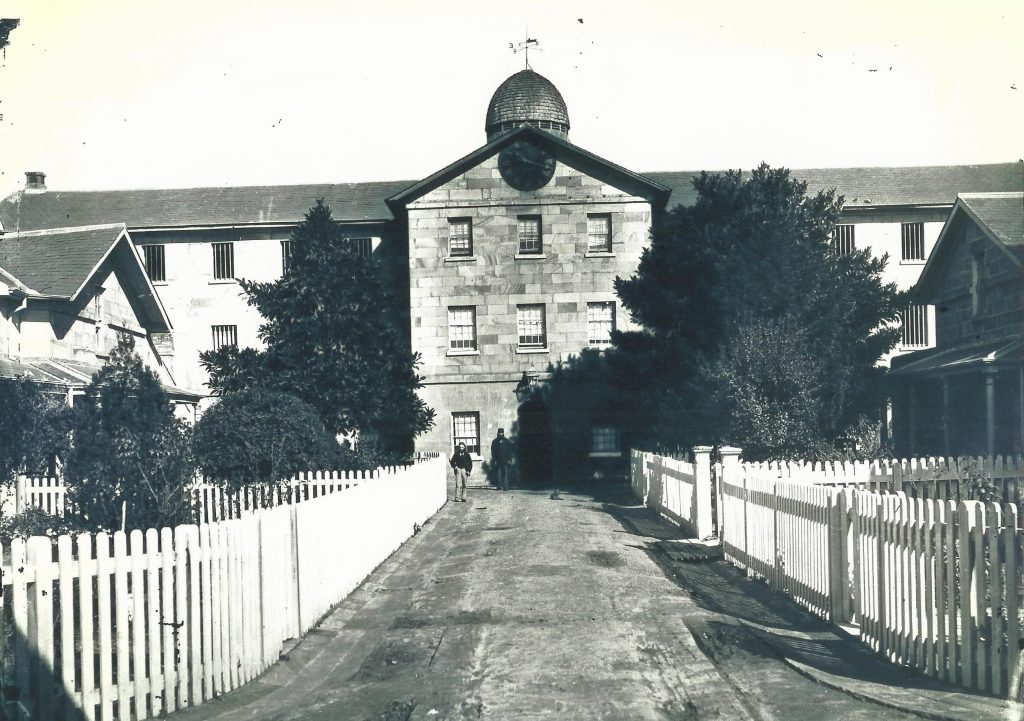In the early part of the 19th century, one of the issues that caused consternation for colonial governors was the care and management of increasing numbers of mentally ill people.
Governor Macquarie had converted the former barracks on the government farm at Castle Hill into an asylum in 1811, but not before he appointed Australia’s first formal carer of “lunatics” Patrick Cullen, a warder at the Parramatta Gaol in 1810.
Mentally ill convicts were kept within this gaol which was located where Prince Alfred Square exists today on the corner of Church Street and Victoria Road.
The Castle Hill Asylum had become so dilapidated by 1825, it was decided to close it and convert a building once used as a courthouse at Liverpool into the colony’s new asylum.
Within a few years, the problems associated with the care of the mentally ill in a converted and essentially ill-suited building became evident, not least because an increasingly class-conscious colonial society didn’t want “free” citizens forced to mix with the convict class, even in health care.
Convicts who became mentally ill could not be released into society, and if they didn’t recover they remained as “convicts” all of their lives.
In 1837 Governor Gipps began the construction of the colony’s first purpose-built asylum at Tarban Creek (later Gladesville Hospital).
However, by 1845 the new asylum was heavily overcrowded and another solution was needed to manage the problem of increasing numbers of mentally ill people in the colony.
With the cessation of convict transportation to the colony in 1839, former convict establishments were being closed.
At Parramatta, the convict prison known as the Female Factory had begun to wind down in 1842 with most of the women given their Tickets of Leave.
However, there were a number of women who were “Invalid” (chronically ill or infirm aged) and “Lunatic” remaining at the institution.
In 1846, twenty-one lunatic female convict patients were transferred from Tarban Creek Asylum to the Female Factory – this was the beginning of a change of the Factory’s role as a prison into an asylum. In March 1848, the Female Factory was officially gazetted as the “Asylum for Lunatic and Invalid Convicts” and males began to be admitted.
This allowed for the separation of convict patients from those who were free settlers, at least for a short time.
On December 31st 1849, the former Female Factory was gazetted as the “Lunatic Asylum Parramatta”, thus becoming the colony’s second public asylum and a role the site continued to fulfill until very recently as Cumberland Hospital.
Cumberland Hospital today is very much smaller than when it was at its largest in the early 201th century.
From once being 1800 beds it is reduced to less than 250 all of which are now located on the western side of the Parramatta River. The oldest and most historically important eastern campus is where the Female Factory was located.
The place today is mired in controversy. Historians and heritage advocates would like to see the colonial buildings turned into a major tourist attraction for Parramatta, after-all it is older and more intact than Port Arthur in Tasmania! Arguably it is a much better site for the new “Powerhouse Museum” utilizing the beautiful sandstone buildings with room for additional structures.
However, the government has flagged plans to offer the site up as a “business hub” thus limiting tourism potential and public access to the area, perhaps forever?
By Terry Smith, the local historian.





